

William Stopford
The cars axed in 2025 that we'll miss the most
17 Hours Ago
Exterior changes, tech upgrades and plenty more – but sadly, Hyundai has made the i30 Sedan more annoying now.
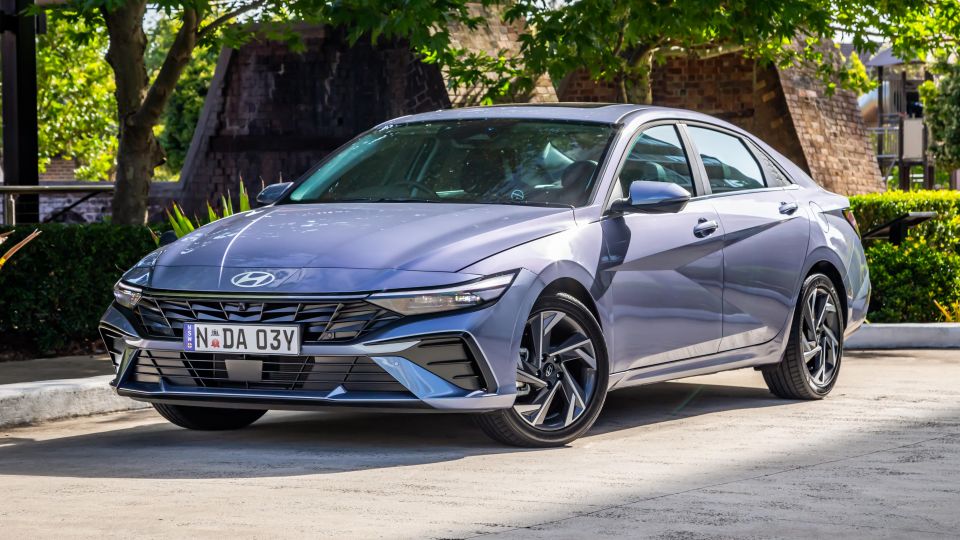
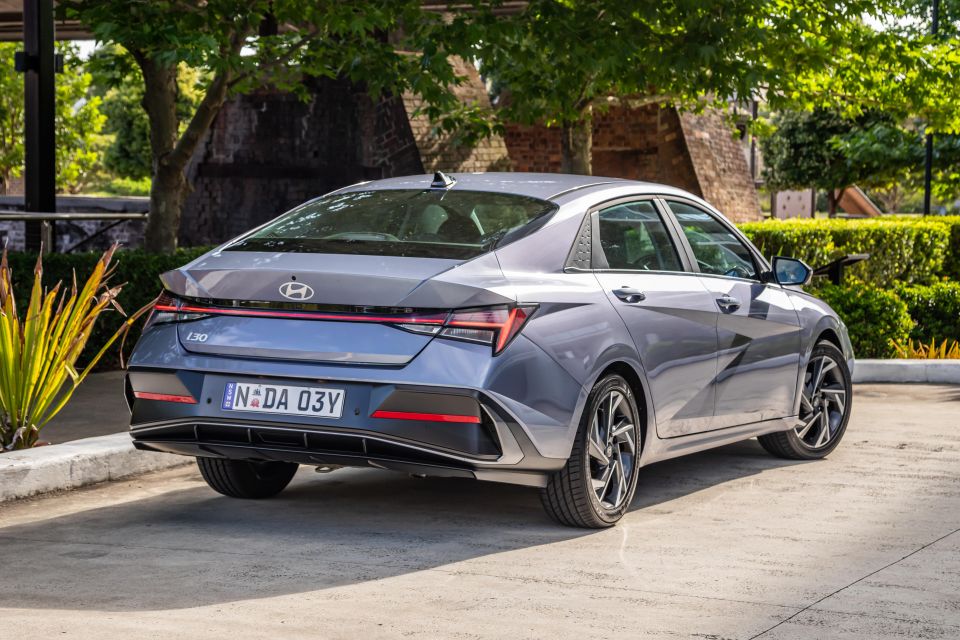

Quickly see how this car stacks up against its competition. Select any benchmark to see more details.
Where expert car reviews meet expert car buying – CarExpert gives you trusted advice, personalised service and real savings on your next new car.
The updated Hyundai i30 Sedan range is starting to make its way into Australian showrooms, and while we’ll have to wait for the more desirable Hybrid (HEV) and turbocharged N Line models – as well as updated i30 Sedan N – this is what we’ve received first.

It’s the top-spec non-turbo, non-hybrid variant – the 2024 Hyundai i30 Sedan Premium – which has seen some important improvements for this mid-life update.
Those include a switch from the old, rather unpleasant six-speed auto to a new CVT automatic, and a revised look at the front and new ‘H’ theme tail-light array.
There’s also heap of new safety technology and features, too. Some of those safety gizmos are great! Others, not so much – read on and you’ll get the gist of it.
The Premium is the top-of-the-range version of the i30 Sedan – if you want the 2.0L engine, that is.
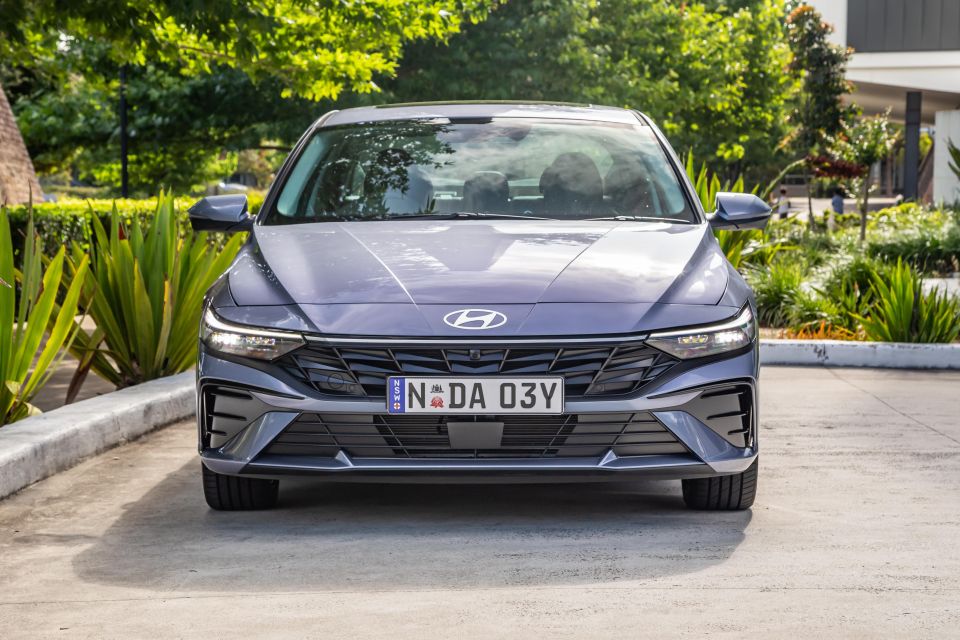
The i30 Sedan range is extensive. We’ll bring you coverage at a later date of the hybrid and N Line models, so stay tuned for that, but if you’re not sold on this what else should you check out? The best alternative to this particular spec is going to be the Mazda 3 G25 GT, at $38,420 plus on-road costs. That model gets a more powerful 2.5L engine, and arguably has a more upmarket interior look and feel, too.
Another option would be the Toyota Corolla ZR Sedan, which you could have in petrol ($37,760) or petrol-electric hybrid ($40,260), and honestly, it’d be the car I’d choose if I was in the market for a sedan like this… if only it wasn’t for the excessive wait times!
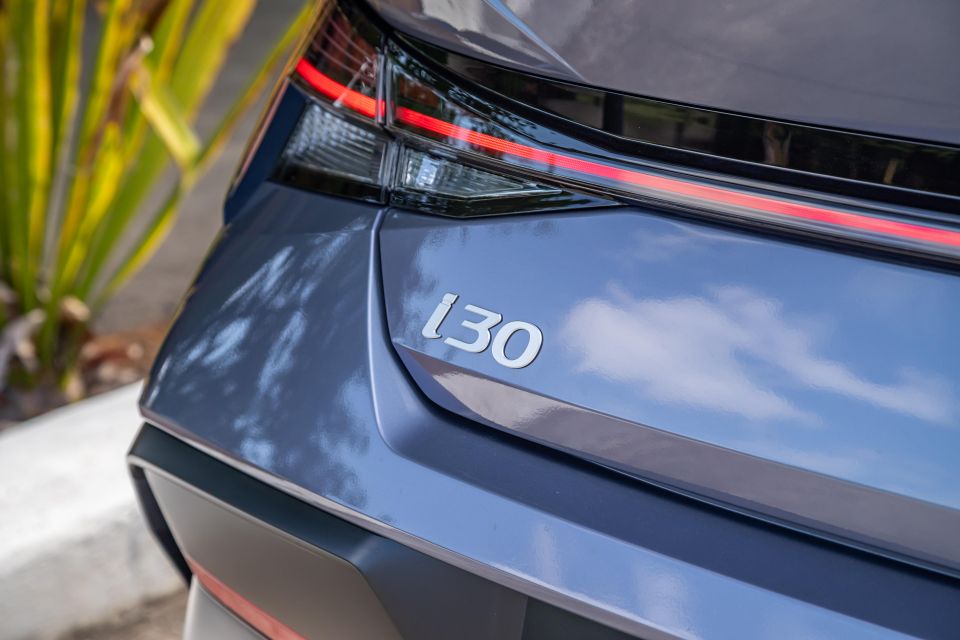
2024 Hyundai i30 Sedan pricing:
Prices exclude on-road costs
Buy your new car without the stress. It's fast, simple and completely free.

Great service from Travis and team, second time I have used this business would not hesitate to recommend them to anyone
Craig C.
Purchased a Ford Ranger in Sunshine Coast, QLD
CarExpert helped Craig save thousands on his Ford Ranger, now let us save you on your next new car.
Find a dealThere haven’t been dramatic changes to the cabin of the i30 Sedan for this update, but it is still a very usable and thankfully, button-heavy space.
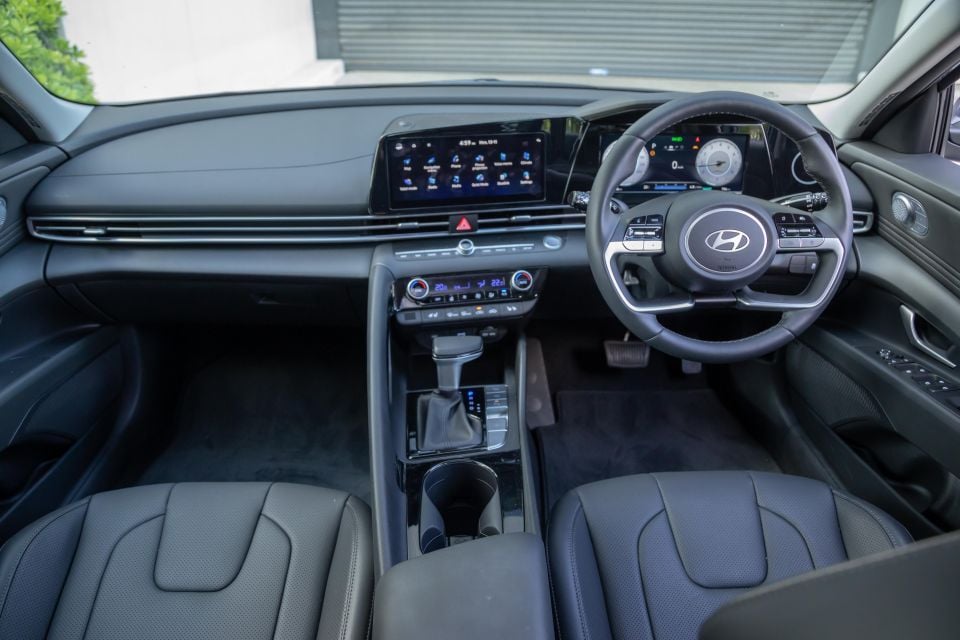
The media screen has a panel of buttons down below, including tuning buttons and a volume knob, as well as hotkeys for some of the most popular menu options i.e. Map, Media etc.
Below that there’s the climate panel, with dials for dual-zone climate control, buttons for fan controls and air recirculation, and this spec also scores heated and cooled front seats as well as a heated steering wheel.
It might seem silly to be so excited by buttons, but when the alternative offered in some other cars is the dive through multiple menus on a screen to adjust simple things like that, you find yourself clinging to the simpler things.
The media screen is also quite good. It’s quick to react for the most part; although, a little bit slow to load when the car has just been started.

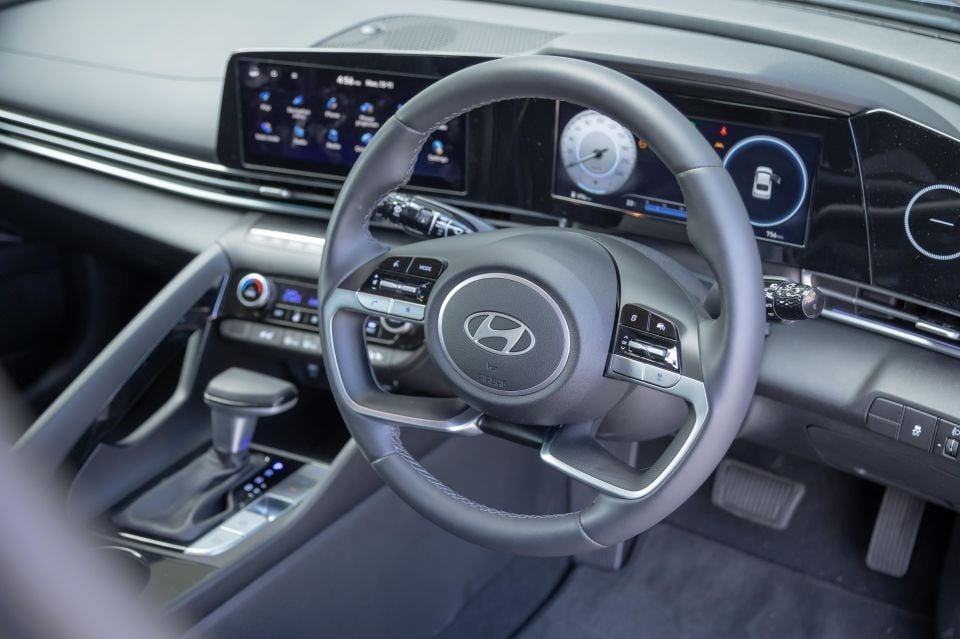
Thankfully, I didn’t have any issues with the Apple CarPlay system and indeed, I appreciate the fact that if you want to you can use the built-in sat nav, which has live mapping as part of the Hyundai Bluelink data services system, it uses cloud data to help you find the best route to your location… like Google Maps does.
Parents will also appreciate that just like some of the family SUVs in the Hyundai Group range, there is now a ‘Quiet Mode’ to limit the rear speaker volume when you’ve got a little one who is having a nap. Otherwise, just blast the Bose system; it’s good for bassy tracks.
The media screen also features a Valet Mode, so you can protect your car if it’s being parked by some young rapscallion at the casino.
There’s also the big digital instrument cluster display, which changes styles when you change the drive mode. From a classy looking white-dial finish in Smart and Normal modes through to a blue tinge to look for Eco, and red carbon-fibre look displays for Sport mode.
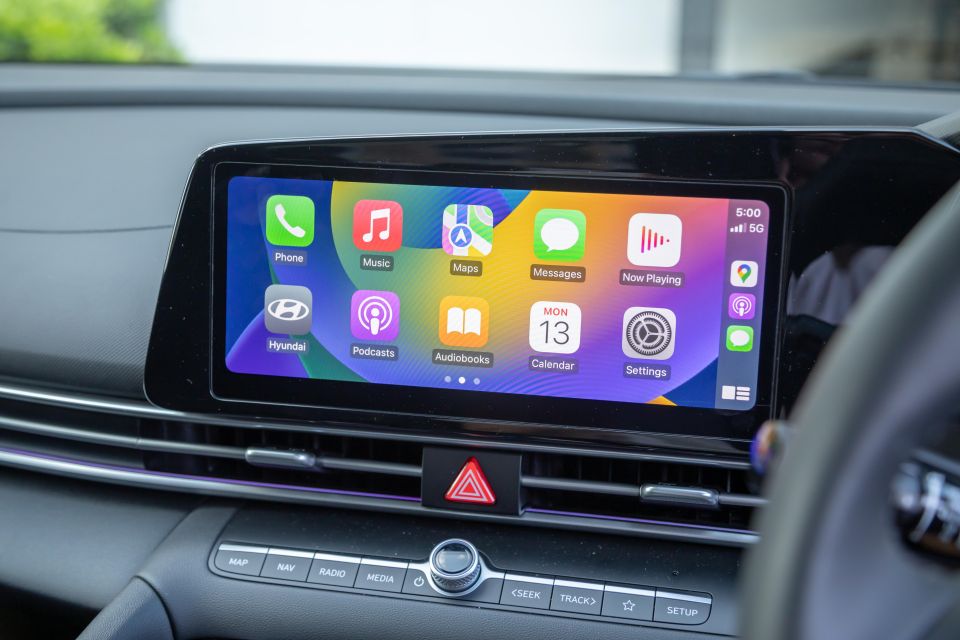
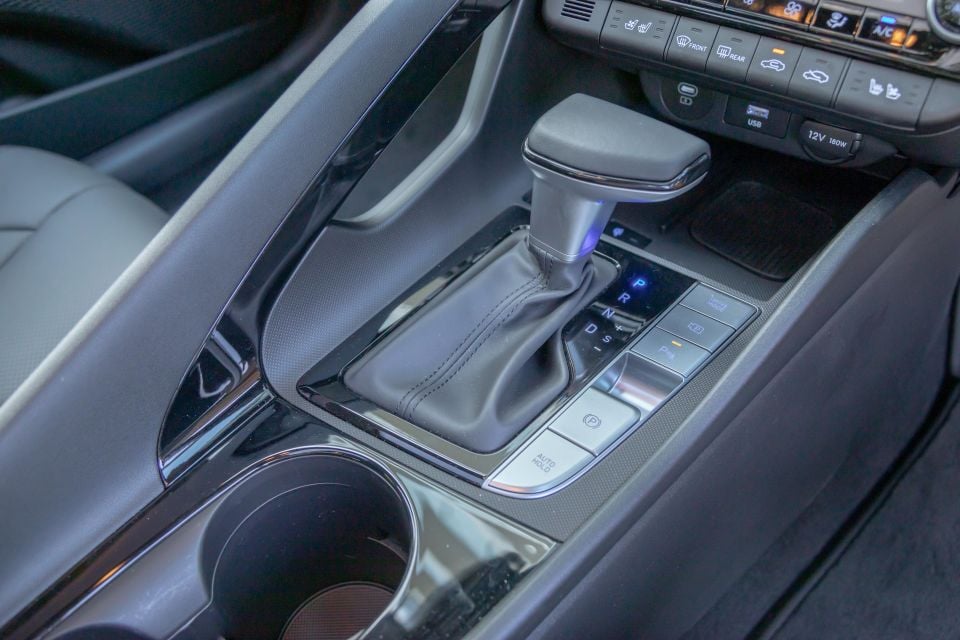
There’s quite a bit of information available through the screen, including adjustments to the settings for the safety systems, and also digital speedo, trip computer, compass and tyre pressure monitoring.
There’s an ambient light strip that runs across the dashboard, but doesn’t stretch to the doors, and it’s not as highly configurable as some other cars out there in 2023.
The driver’s seat scores electric adjustment with memory settings for the driver, but the passenger must do with manual seat adjustment.
Storage up front includes a cubby in front of the gear selector with a wireless phone charger, a pair of cupholders between the seats with an adjustable floor so you can make it smaller or larger, depending on the size of your cup.

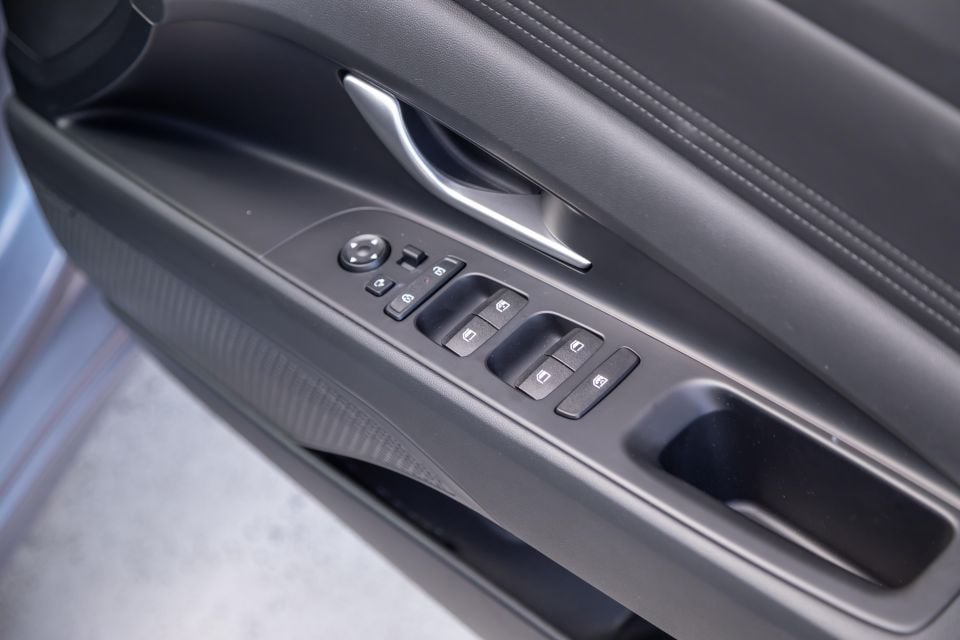
However, if you have a small takeaway coffee cup there are no grips to keep it in place, so it might move around. The doors also have big bottle holders as well.
Parent note: the front doors have lights in the grab handles for when you’re trying to get in at night, and also the keyless entry buttons are there.
The rear door handles aren’t illuminated and don’t have unlock buttons. I know I’m spoiled because I drive heaps of cars, but it can be a bit annoying to have to press the front door button every time you carry your kid to the car.
Back seat space is pretty good for this size of car, but taller occupants just need to watch their head when getting in and out as it has a bit of a swoopy roofline.
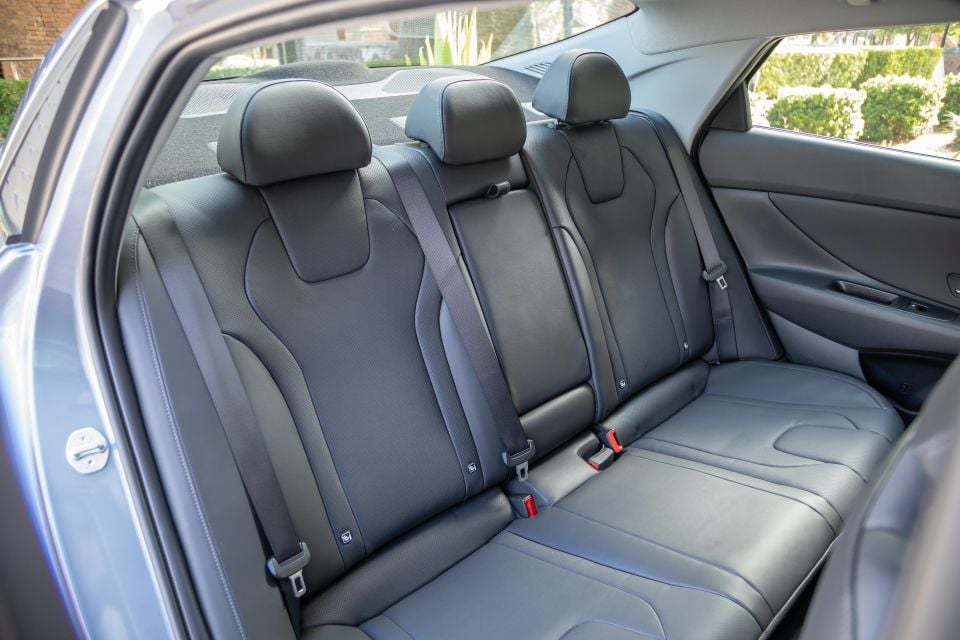
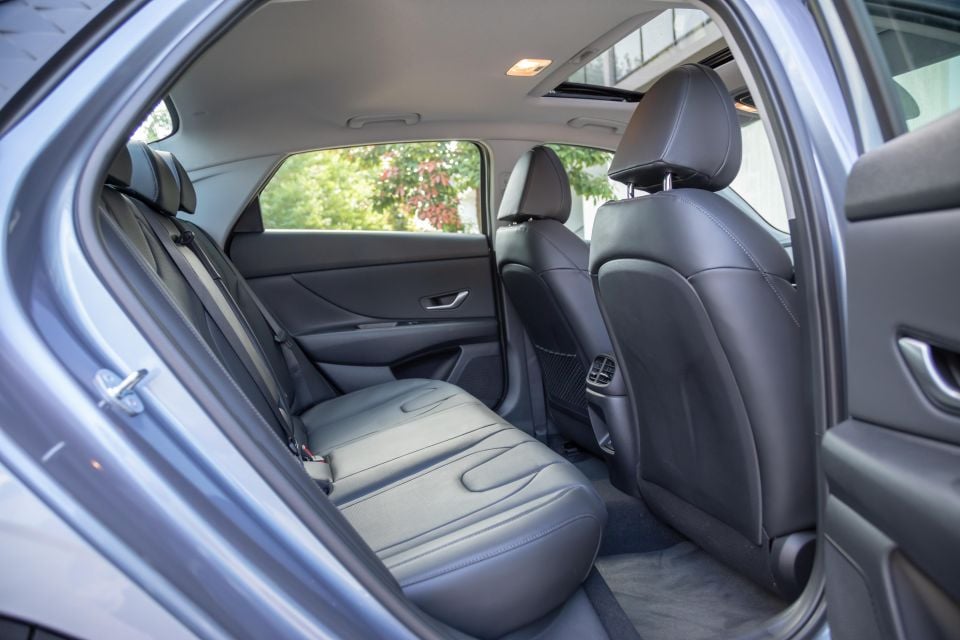
Once in, there is enough space for someone my size (182cm / 6’0”) to sit behind someone of a similar size with enough knee room, foot room and head space to be reasonably comfortable.
You can fit three adults across at a pinch, just be aware there is a slight transmission tunnel intrusion. For children in the back, there are ISOFIX points and three top-tethers as well.
Rear amenities include a pair of directional air vents, twin USB-C ports, but only one map pocket (and it’s a mesh one) so things can fall through it.
There are bottle holders in the doors, and a fold-down armrest with cup holders.
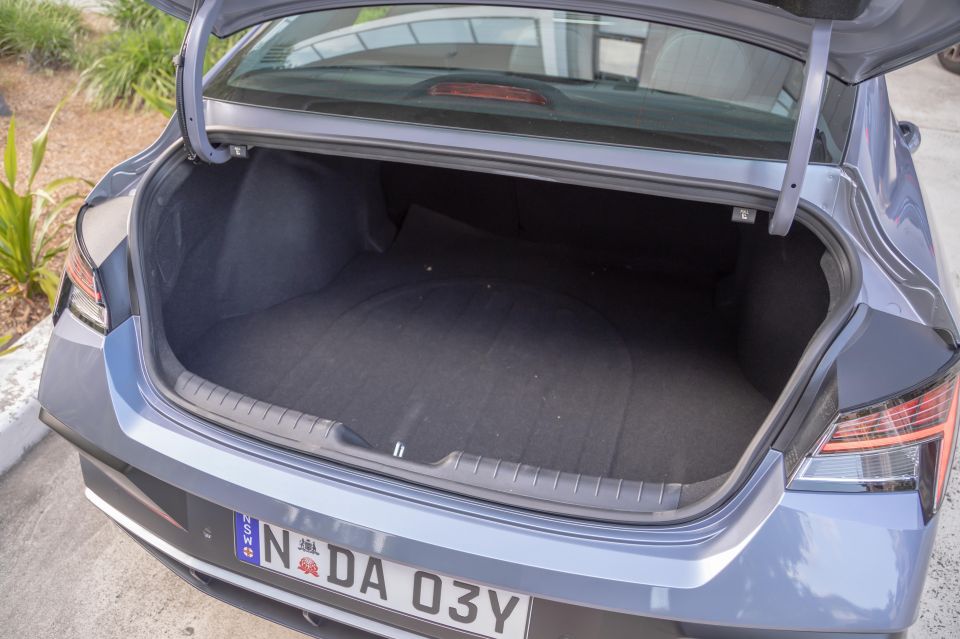
But oddly, even in this high-grade version, the rear door armrests are hard plastic jobs, which isn’t pleasant on the old elbows.
This car has halogen interior lighting, which is at odds with the ambient LED dash light, high-tech screens, and full LED exterior lights, too.
The boot also has a halogen lamp, but does have a very decent amount of space with a claimed 474 litres of cargo capacity – but the gooseneck boot hinges do eat into the space a bit.
In petrol versions there is a full-size spare wheel, which could help this car appeal to rural buyers.
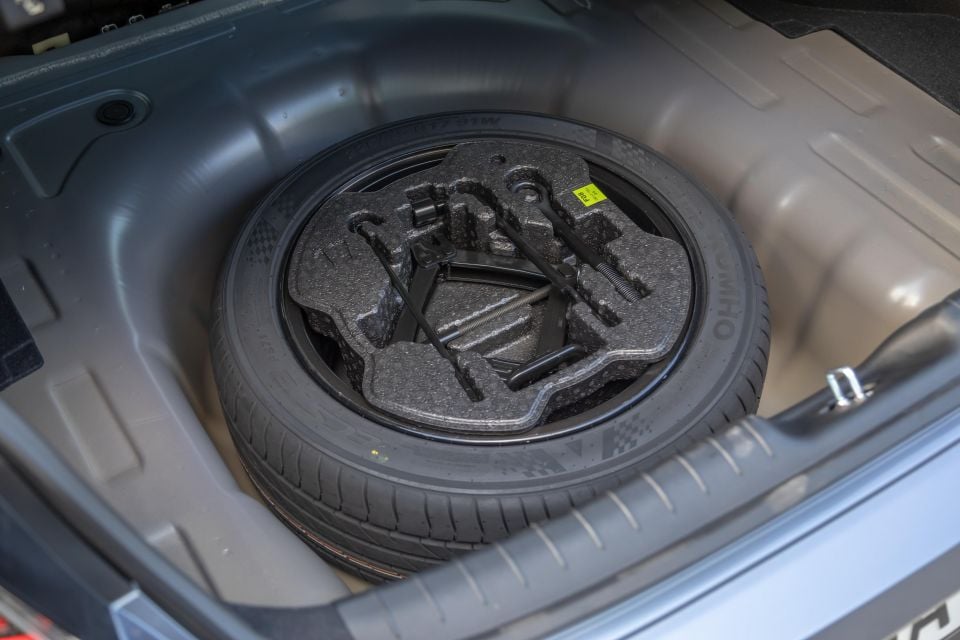
There are pull levers in the boot to quickly release the rear seat backrests, but you will have to go around and push them down, or shove them down with whatever you’re loading in.
This grade also has the SUV-like smart boot operation, where if the car is locked and you haven’t been near it for a while, you can open it handsfree just by standing behind the car with the key on your person. However, it’s not an electric boot lid.
As I’ve made it clear, this review focuses on the i30 Sedan with the base engine.
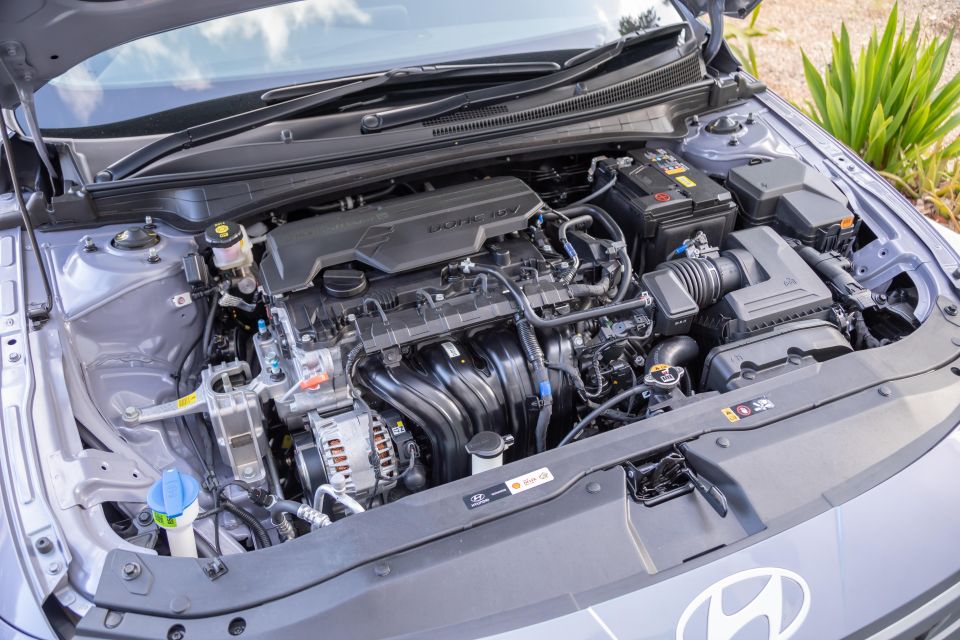
It’s a 2.0-litre naturally aspirated four-cylinder that produces 110kW of power and 180Nm of torque. Those are the same outputs as the pre-facelift engine, but it feels a bit more usable now thanks to the provision of a continuously variable transmission (CVT) gearbox instead of the existing six-speed automatic.
Now, if that doesn’t light your fire, the details for the other engines might. The sporty N Line variants are powered by a 1.6-litre turbo four mated to a seven-speed dual-clutch automatic transmission. Outputs for this engine haven’t been confirmed for the update, but it previously churned out 150kW and 265Nm.
The other powertrain choice is the hybrid, which teams a 1.6-litre four-cylinder petrol engine to a 32kW/170Nm electric motor and a 1.32kWh battery pack. Total system output is 104kW of power and 265Nm of torque, and doing the thinking for that version is a six-speed dual-clutch automatic transmission.
Now, there’s not really another spot in this review to talk about this, but the panel gaps and fit and finish of this test vehicle – including those panels around the bonnet – were quite poor.
The edges of the front guards were out of whack with the bonnet shut lines, and the boot lid had a gap you could fit a packet of footy cards in on one side, but a far slimmer space on the other. I expect better from Hyundai, and I’ve pointed it out to the team, who assure me that they will keep an eye on this concern with customer cars to be checked.
The big change here comes down to the powertrain, which is vastly better than the previous one.
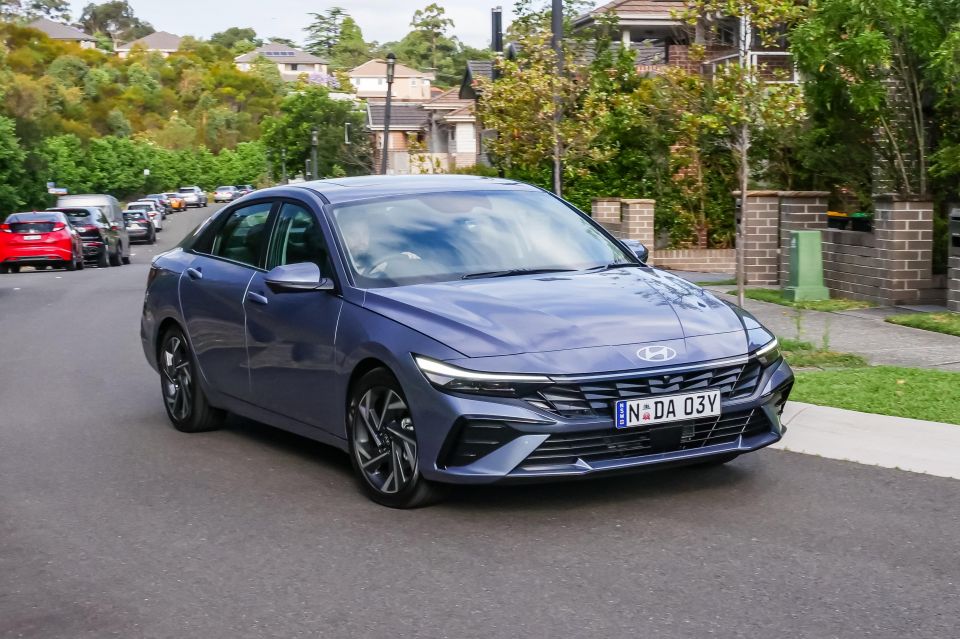
It’s amazing what a difference a transmission can make, and especially spectacular when the better option is a CVT.
That’s the case here, with the new transmission making for a much more likeable drive experience than the old six-speeder, which was busy and made the car feel quite lethargic.
Now the 2.0-litre four-cylinder is a far more pleasant drive, because it isn’t constantly jumping through the gears to get up hills or simply accelerate slightly faster.
The old transmission was fussy, whereas the inherent nature of the CVT is that it is smoother, it allows the engine to rev and actually aids progress and makes the car feel quicker as a result.
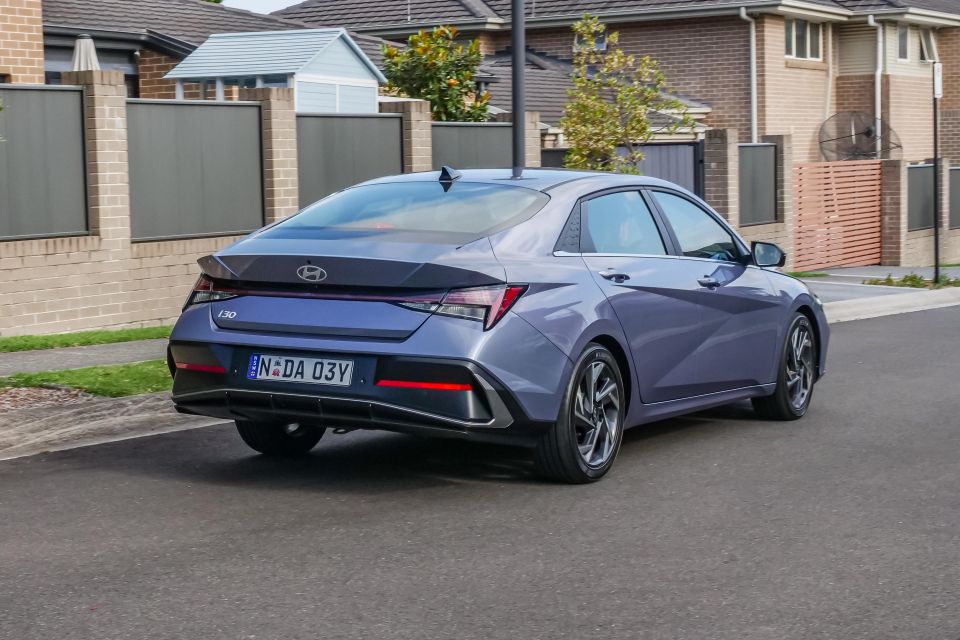
Where expert car reviews meet expert car buying – CarExpert gives you trusted advice, personalised service and real savings on your next new car.
It isn’t what you’d call a relaxed transmission, either. At freeway speeds it can hum a little, and it’s not like other CVTs that sit way down in the 1000rpm range at freeway pace. Nope, this one will sing along at a higher rev rate, but still offer a good amount of pep when you need to gas it.
Don’t get me wrong – it’s not fast. If you want something faster, the other versions will scratch that itch for you. But I do think that it is a more amenable and pleasing drive now, and overall is more appealing as a result of the change.
The other elements of the drive experience are pretty good, too. The suspension is mostly smooth and clever in the way it balances the body of the car over bumpy sections at lower speeds – but at 100km/h or more you can really cop a jolt through the front axle over freeway joins and sharp edges.
The steering is decent as well, with a nice linear feel to it, and offers decent response at all speeds. Again, it’s not after the ‘sporty’ market, but if you want to there is a drive mode selector and the Sport mode has a bit more heft to its steering.
There’s also a lane-keeping system with Lane Trace Assist, that will aim to keep you centred between the lines. It does work okay but I just don’t gel with cars trying to steer for me. So I ended up switching it off each time I drove it (after testing it out), which is simply a push-and-hold of the steering wheel button.
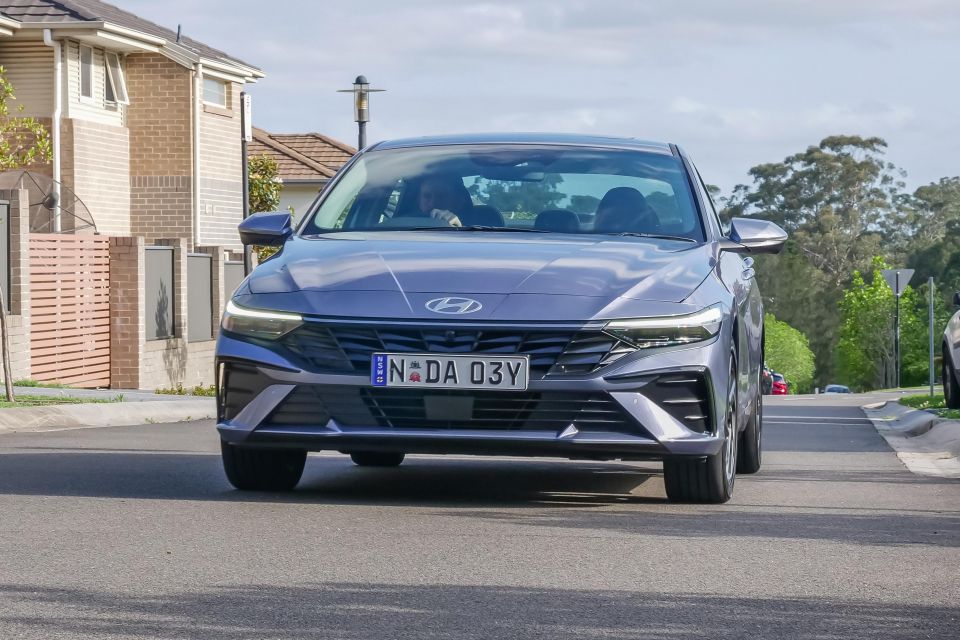
What takes a bit more work is the speed sign recognition system, which you can either disable through the media screen by way of a series of button presses on start-up (confirm for the disclaimer about your responsibility), then Settings > Vehicle > Speed limit > Off > then back to radio or CarPlay or navigation or whatever.
The other way to do it is to go through the steering wheel controls, and on the driver info screen you have to go to the lane keep button, hold OK, then it will come straight to the safety systems screen on the infotainment display – you can’t set it as a favourite on the star steering wheel button, sadly.
Also, if you deal a lot with coarse-chip road surfaces, you might want to test drive this car on these roads, because it can be very loud in the cabin on rougher roads.
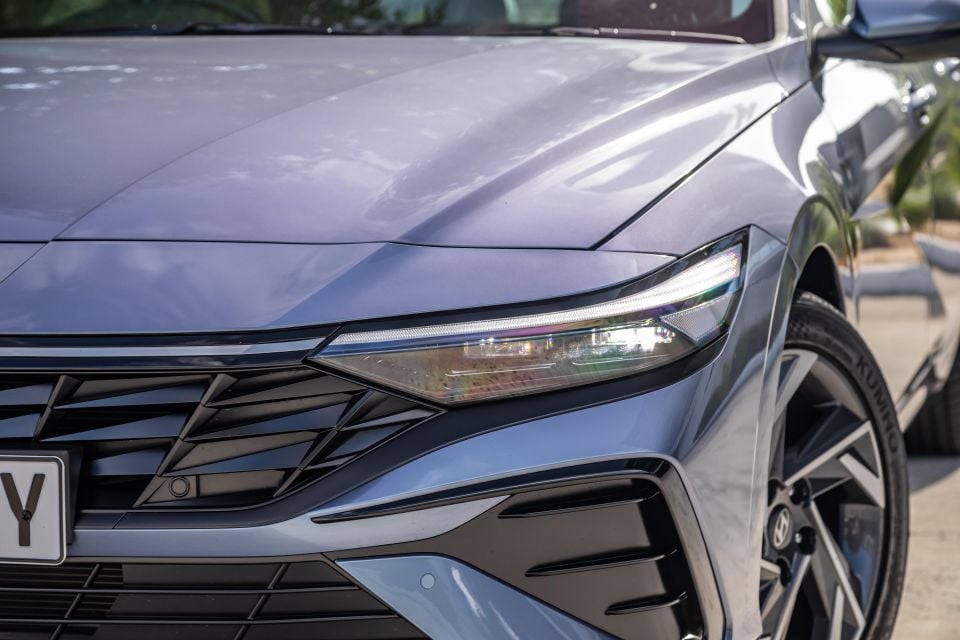

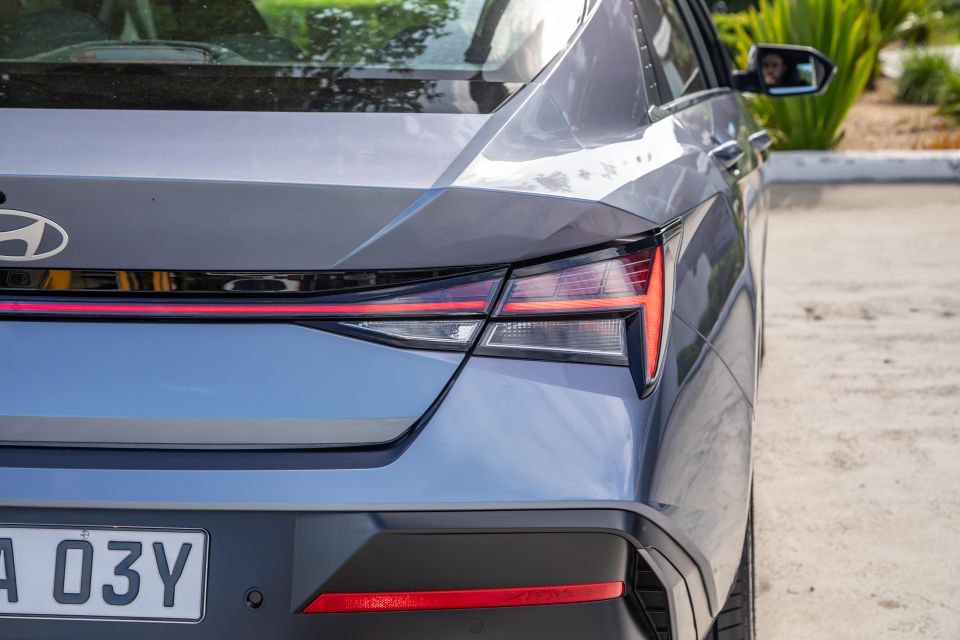

i30 Sedan standard equipment:
i30 Sedan Elite adds:
i30 Sedan Premium adds:
MORE: 2024 Hyundai i30 Sedan price and specs
The safety situation is a bit perplexing with the i30 Sedan, because at the time of publication, there’s still no ANCAP or Euro NCAP rating.
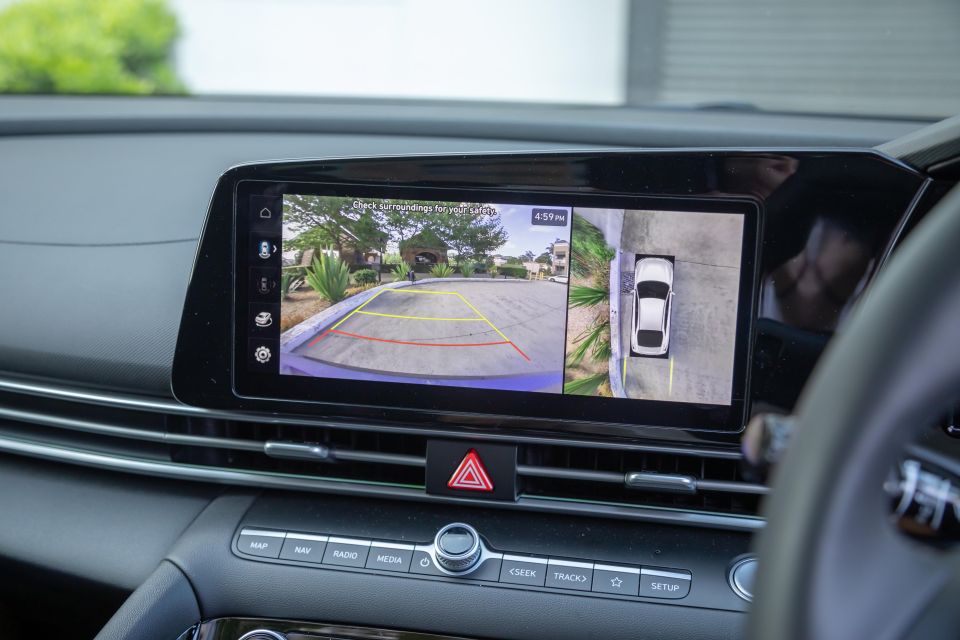
Maybe it’s coming, because this car has been specced up with stuff that it would need to get the top score. However, it doesn’t have a front-centre airbag, which could be an issue – the i30 Sedan has six airbags; dual front, front-side and full-length curtain.
In isolation, the Premium model stands out as a model loaded with heaps of standard safety technology, and it makes the lower grade models seem comparatively undercooked.
Standard safety equipment includes:
i30 Sedan Elite adds:
i30 Sedan Premium adds:
As mentioned, the safety technology – namely the speed sign system – is painful to live with. It gets things wrong too often, and it is frustrating to have to switch the tech off every time you drive the car if you don’t like it.
The i30 Sedan range is covered by the same five-year, unlimited-kilometre warranty as the rest of the Hyundai range.
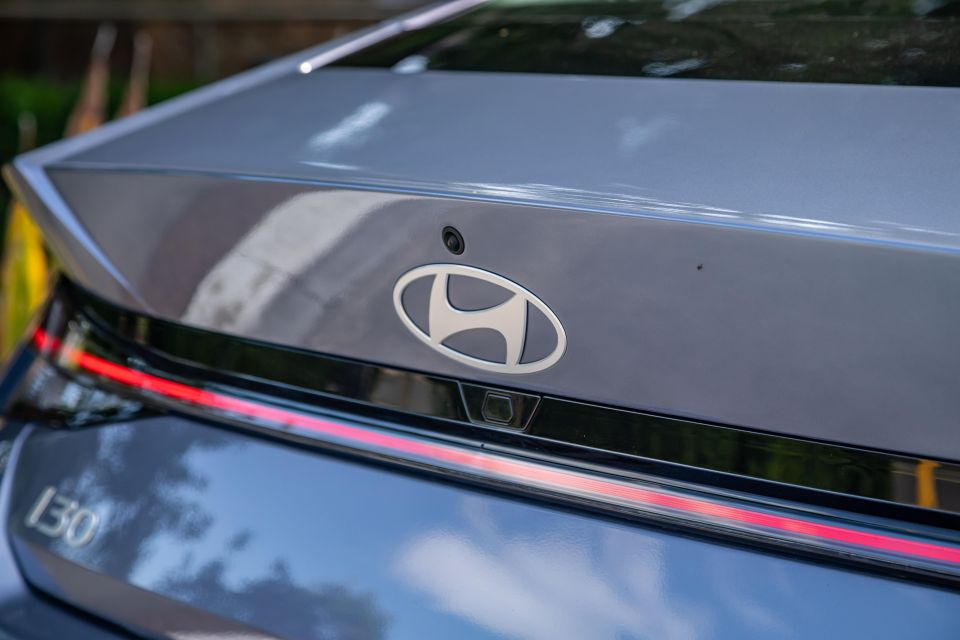
There are some excellent upsides to ownership, on paper. Firstly, this engine requires maintenance every 12 months/15,000km, and the services are pretty cheap.
You can pay-as-you-go, with a lifetime capped-price servicing plan on offer, or you can prepay your maintenance for three years/45,000km ($975), four years/60,000km ($1300) or five years/75,000km ($1625). Plus, if you service your car within the Hyundai network, you have access to lifetime roadside assistance, too.
If your Hyundai has inbuilt navigation, you get 10 years of free map updates, and there is a five-year connected services plan for the Bluelink system included, too. This means you won’t need to think about the data costs for your connected car – at least initially.
When it comes to fuel costs, 2.0L versions of the i30 Sedan are said to consume 6.1 litres per 100km on the combined cycle. On my test drive, which incorporated a few hundred kilometres of mixed driving in urban, open road and freeway scenarios, I saw an indicated return of 6.7L/100km – this is a very good result.
If you think it’s worth spending money to save money, then the i30 Sedan Hybrid might be a better choice for you. Exact pricing for all grades is yet to be confirmed, but in the base spec it represents a $4000 premium, but it has a staggering official fuel use number of 3.9L/100km.
There’s a fair bit of positive stuff for this updated version of the Hyundai i30 Sedan, and the Premium spec doesn’t leave you wanting for much when it comes to the specification list.
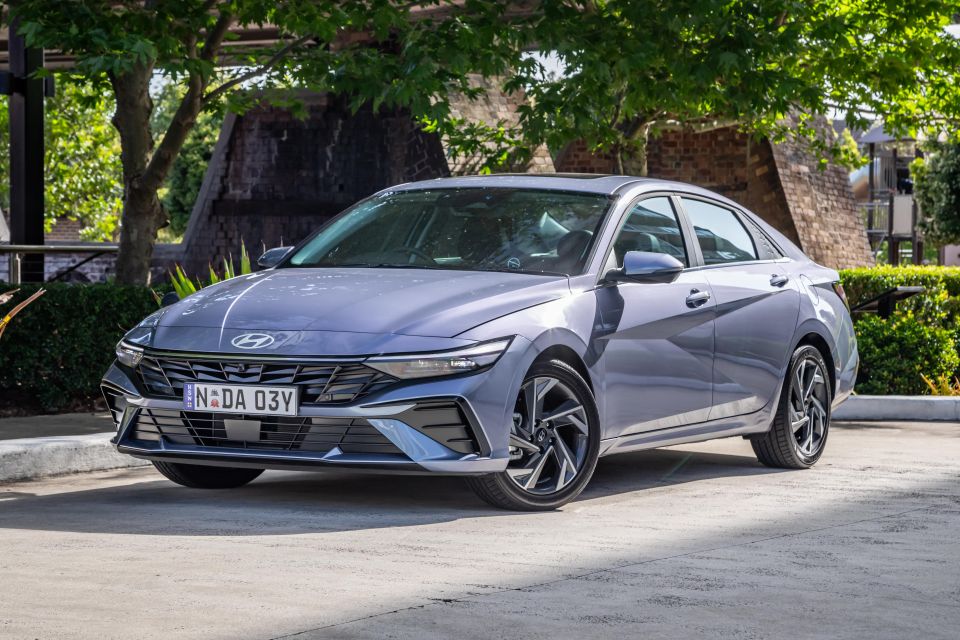
I look forward to seeing if the new hybrid and N Line models offer improved panel fitment, and really hope that, for the customer’s sake, Hyundai can do something about the bloody annoying safety tech settings in their cars.
Otherwise, this is an entirely compelling and competitive small sedan, and it’s stylish, to boot!
Click the images for the full gallery
BUY: Hyundai i30 MORE: Everything Hyundai i30
Where expert car reviews meet expert car buying – CarExpert gives you trusted advice, personalised service and real savings on your next new car.
Matt has more than a decade of experience in automotive journalism, and loves exploring the pros and cons of new cars, delving into deep-dive industry stories, and going for a drive just for the fun of it.


William Stopford
17 Hours Ago


Matt Campbell
1 Day Ago


William Stopford
2 Days Ago


CarExpert.com.au
5 Days Ago


Max Davies
6 Days Ago


Damion Smy
6 Days Ago